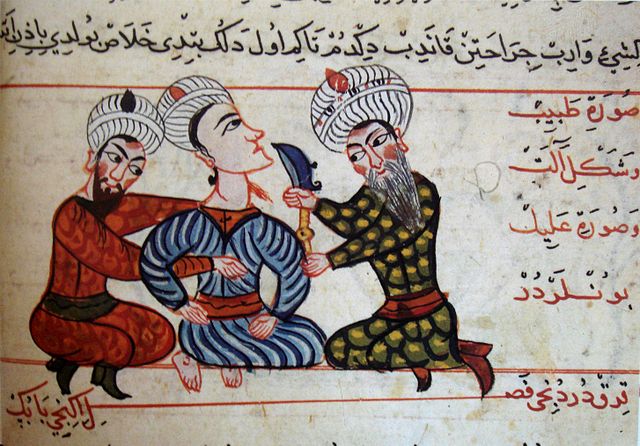The Abbasid Dynasty, once a powerful and influential Islamic empire that spanned a vast territory, faced a steep decline that ultimately led to its fall. In this blog, we delve into the intricate web of events that triggered the downfall of the Abbasid Dynasty. From internal power struggles and political fragmentation to external invasions and economic instability, a myriad of factors contributed to this once-great dynasty’s unraveling. Understanding these events is crucial in unraveling the complexities of the Abbasid Dynasty’s decline and its impact on the broader historical narrative of the Islamic world. Join us on a journey through history as we explore the pivotal moments that marked the decline of the Abbasid Dynasty.
Introduction to the Abbasid Dynasty
The Abbasid Dynasty, one of the most influential and powerful Islamic caliphates in history, ruled over the Islamic world from 750 to 1258 AD. Established by the descendants of Abbas, the uncle of the Prophet Muhammad, the Abbasids moved the caliphate from Damascus to Baghdad, marking the beginning of a golden age in Islamic history.
Rise of the Abbasid Dynasty
After overthrowing the Umayyad Caliphate, the Abbasids ushered in a period of cultural, scientific, and economic flourishing known as the Islamic Golden Age. This era saw significant advancements in various fields like medicine, astronomy, and philosophy.
Challenges Faced by the Abbasid Dynasty
Despite their initial success, the Abbasids faced internal strife, external invasions, and political unrest, leading to a gradual decline in their power and influence. Factors such as corruption, revolts, and economic instability contributed to the weakening of the dynasty.
- Increasing decentralization within the empire
- Constant power struggles among the ruling elite
- Financial strain caused by excessive spending
Legacy of the Abbasid Dynasty
The Abbasid Dynasty left a lasting impact on Islamic civilization through its preservation and translation of classical knowledge, promotion of learning, and architectural achievements. Despite its eventual decline, the Abbasids’ contributions to art, literature, and science continue to influence the world to this day.

Rise to Power of the Abbasid Dynasty
The Abbasid Dynasty rose to power in 750 CE, establishing its capital in Baghdad, Iraq. This marked a significant shift from the Umayyad rule as the Abbasids promised a more inclusive and just government.
Establishment of Baghdad
The decision to move the capital to Baghdad was strategic, allowing the Abbasids to centralize power and control trade routes, facilitating economic growth and prosperity.
This move also symbolized a break from the Umayyad’s Arab-centric policies, as the Abbasids embraced multiculturalism and welcomed scholars from various backgrounds and cultures.
Golden Age of Islam
Under the Abbasid rule, the Islamic Golden Age flourished, witnessing advancements in science, medicine, mathematics, and philosophy.
- Notable scholars like Al-Kindi, Al-Khwarizmi, and Al-Razi made significant contributions during this period.
- The House of Wisdom in Baghdad became a center for intellectual exchange among scholars from different parts of the world.

Challenges Faced by the Abbasid Dynasty
The Abbasid Dynasty faced numerous challenges that contributed to its eventual decline. These challenges were diverse and multifaceted, ranging from internal strife to external invasions and economic difficulties.
Political Instability
The Abbasid Dynasty struggled with internal power struggles and constant revolts from various governors and local rulers, leading to a weakened central authority.
This constant political turmoil weakened the empire’s ability to govern effectively and respond to external threats.
Financial Difficulties
The dynasty faced severe financial difficulties due to constant wars, lavish court expenditures, and corruption within the bureaucracy.
Managing the vast empire stretched their financial resources thin, leading to economic instability and rising debt.
External Invasions
External invasions, particularly from the Mongols and the Seljuk Turks, posed a significant threat to the Abbasid Dynasty.
- The Mongol invasion of Baghdad in 1258, led by Hulagu Khan, dealt a fatal blow to the Abbasid caliphate.
- The Seljuk Turks’ incursions weakened the empire’s borders and eroded its territorial control.
Internal Struggles and Political Instability
During the decline of the Abbasid Dynasty, internal struggles and political instability played a significant role in weakening the empire. Various factors contributed to this turmoil, leading to a gradual downfall.
Revolts and Civil Wars
Revolts and civil wars broke out within the empire, weakening the central authority and dividing the regions. These conflicts drained resources and destabilized the governance structure. The internal strife made it challenging to address external threats effectively.
Economic Challenges
Internal economic challenges, including corruption and fiscal mismanagement, further exacerbated the situation. The declining revenue and strained economy hindered the government’s ability to maintain stability and meet the needs of the population.
The loss of key trade routes and economic downturns impacted the empire’s financial stability, leading to increased discontent among the people.

External Threats and Invasions
During the Abbasid Dynasty’s decline, external threats and invasions played a significant role in weakening the empire. The dynasty faced numerous challenges from neighboring powers and nomadic groups, which contributed to its eventual downfall.
Viking Raids in the Abbasid Territories
The Abbasid Dynasty faced threats from Viking raids in the eastern territories during the 9th century. These raids disrupted trade routes and caused instability in the region, impacting the empire’s economy and security.
Byzantine Incursions into Abbasid Lands
The Byzantine Empire’s incursions into Abbasid territories posed a constant threat to the dynasty’s borders. Constant border skirmishes and conflict strained the Abbasid forces, making it difficult to maintain control over the empire.
Role of Economic Factors in the Decline
The economic factors played a significant role in the decline of the Abbasid Dynasty. The continuous wars, extravagant lifestyle of the caliphs, and corruption within the administration led to a severe strain on the empire’s finances.
Financial Drain due to Continuous Wars
The Abbasid Dynasty was engaged in multiple costly wars, draining the empire’s resources. Constant military campaigns put a significant strain on the economy, leading to financial instability.
The need to fund these wars resulted in increased taxation on the population, further burdening the economy and leading to civil unrest.
Impact of Corruption on Economy
Corruption was rampant within the administration of the Abbasid Dynasty. Officials embezzled funds, leading to a loss of revenue for the empire.
- This corruption weakened the economy from within, as resources that should have been used for development were siphoned off for personal gains.
- Corrupt practices eroded public trust and confidence in the government’s ability to manage the economy effectively.
Social and Cultural Changes During the Decline
As the Abbasid Dynasty faced its decline, a multitude of social and cultural changes swept through the empire, contributing to its eventual fall.
Shift in Power Structures
The decline witnessed a significant shift in power structures within the empire, with provincial governors gaining more autonomy and challenging the central authority of the caliph.
This weakening of centralized power weakened the overall stability of the dynasty.
Intellectual Stagnation
During this period, there was a noticeable decline in intellectual pursuits and patronage, leading to a stagnation in advancements in various fields.
- The once-thriving House of Wisdom in Baghdad saw a decrease in support and scholarly activities.
- Madrasas, which were centers of learning, also experienced a decline in resources and scholarly engagement.
Final Years and Legacy of the Abbasid Dynasty
As the Abbasid Dynasty faced various internal conflicts and external invasions, its decline became inevitable. In its final years, the dynasty struggled to maintain control over its vast empire, leading to a weakened central authority and increased regional autonomy.
Challenges Faced by the Abbasid Dynasty
The Abbasid Dynasty faced numerous challenges, including economic turmoil, political unrest, and the fragmentation of its territories. These factors contributed to the dynasty’s gradual decline and inability to govern effectively.
The rise of powerful military leaders and governors further weakened the central authority, leading to increased instability within the empire. The dynasty’s inability to address these internal problems ultimately hastened its downfall.
Legacy of the Abbasid Dynasty
The Abbasid Dynasty had a profound impact on various aspects of Islamic civilization and culture. Despite its eventual decline, the dynasty’s contributions to art, literature, science, and architecture endured long after its fall.
- Art and Architecture: The Abbasid Dynasty was known for its patronage of the arts, resulting in the development of intricate designs and architectural marvels that reflected the era’s cultural richness.
- Science and Scholarship: The Abbasid era was a golden age of scientific advancement, with notable achievements in fields such as astronomy, mathematics, medicine, and philosophy.
- Literature and Poetry: Prominent literary figures emerged during the Abbasid Dynasty, producing enduring works that contributed to the Islamic literary tradition.
Frequently Asked Questions
-
- What events contributed to the decline of the Abbasid Dynasty?
- Various factors contributed to the decline of the Abbasid Dynasty, such as external invasions, internal revolts, political fragmentation, economic challenges, and social unrest.
-
- How did external invasions affect the Abbasid Dynasty?
- External invasions by groups like the Mongols and Crusaders weakened the Abbasid Dynasty by capturing and sacking important cities, disrupting trade routes, and causing instability within the empire.
-
- What role did internal revolts play in the fall of the Abbasid Dynasty?
- Internal revolts led by governors, military commanders, and local leaders challenged the authority of the Abbasid caliphs, causing civil wars and weakening the central government’s control.
-
- How did political fragmentation impact the Abbasid Dynasty?
- Political fragmentation occurred as regional governors and local rulers gained more autonomy, leading to the decentralization of power and the eventual disintegration of the Abbasid Empire.
-
- What economic challenges did the Abbasid Dynasty face?
- The Abbasid Dynasty faced economic challenges such as financial mismanagement, inflation, declining tax revenues, and the disruption of trade, which further weakened the empire.
-
- What role did social unrest play in the decline of the Abbasid Dynasty?
- Social unrest, including tensions between different social classes, ethnic groups, and religious sects, contributed to internal conflicts and instability, hastening the decline of the Abbasid Dynasty.
Unraveling the Events that Caused the Decline of the Abbasid Dynasty
In conclusion, the decline of the Abbasid Dynasty was a complex interplay of various factors that ultimately led to its fall. The dynasty faced internal strife, including political unrest, succession struggles, and economic challenges. Furthermore, external invasions, such as the Mongol invasion, significantly weakened the empire. The inability to adapt to changing times, decentralization of power, and loss of control over vast territories also contributed to its demise. By understanding the events that shaped the decline of the Abbasid Dynasty, we gain insights into the importance of adaptability, unity, and strong leadership in sustaining a dynasty. History serves as a reminder that even the most powerful empires are not immune to downfall.



